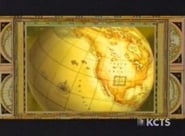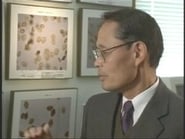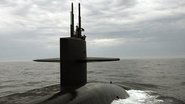-

-
-
NOVA : Season 26
-
Air date: 06 Oct '98 - 19 episodesPBS' premier science series helps viewers of all ages explore the science behind the headlines. Along the way, NOVA demystifies science and technology, and highlights the people involved in scientific pursuits.
-
-
List of Episodes (19)
-
NOVA (1974)

-
1. Lost at Sea: The Search for Longitude
06 Oct '98In 1714, following a maritime disaster, British Parliament offers £20,000 for the first reliable method of determining longitude on a ship at sea. It's known that longitude can be found by comparing a ship's local time to the time at the port of origin. The challenge is finding a clock—a chronometer—that can keep time at sea, where temperature changes, humidity, gravity and a ship's movement affect accuracy. NOVA chronicles the seventeenth-century journey to determine longitude.
-
NOVA (1974)

-
2. Chasing El Nino
13 Oct '98A massive planet-sized machine controls our weather day-to-day, and our climate season-to-season. It takes an event of staggering proportions to disrupt a machine this large and powerful, a juggernaut with more energy than a million nuclear bombs. Signs now indicate that such an event is underway - El Niño. More than a series of storms stunning the California coastline, El Niño is second only to the seasons in its effect on global weather. In a P-3 off the coast, a team plunges into a storm fron
-
NOVA (1974)

-
3. Terror In Space
27 Oct '98Experience the harrowing and life-threatening problems aboard the aging Mir space station through the eyes of the Russian and American astronauts who lived through them. Feel the heat from the fire that erupted on board. See the collision between Mir and another space craft. Endure the power outages and the computer failures that have jeopardized lives. Hear the debate over whether NASA should continue to risk its astronauts by sending them to Mir in preparation for the launch later this year of
-
NOVA (1974)

-
4. Special Effects: Titanic and Beyond
03 Nov '98NOVA goes behind the scenes in Hollywood, where the art of illusion meets the science of perception.
-
NOVA (1974)

-
5. Deadly Shadow of Vesuvius
10 Nov '98The shattered remnants of the Roman city of Pompeii bear witness to the risk that the people of Naples still face today.
-
NOVA (1974)

-
6. Ice Mummies: Frozen in Heaven (1)
24 Nov '98This is the bizarre and fascinating story of the remains of Inca culture, frozen for posterity high in the mountains of the Andes. Evidence has emerged of sacrifice to the mountain gods, whose existence dominated the civilization over 500 years ago. The film traces the frozen bodies of children uncovered by archaeologists in South America, and follows an archaeological expedition to a high-altitude sacred site in search of ritual remains and another body. How did they come to be there? Why did t
-
NOVA (1974)

-
7. Ice Mummies: Siberian Ice Maiden (2)
24 Nov '98The Siberian Ice Maiden, discovered in the Pastures of Heaven, on the high Steppes, is believed to have been a shamaness of the lost Pazyryk culture. She had been mummified and then frozen by freak climatic conditions around 2400 years ago, along with six decorated horses and a symbolic meal for her last journey. Her body was covered with vivid blue tattoos of mythical animal figures. Together with the newly discovered body of a man, nicknamed "Conan," her body has now been restored, and is prov
-
NOVA (1974)

-
8. Ice Mummies: Return of the Iceman (3)
24 Nov '98Cutting-edge science and archaeology are reconstructing the life and culture of The Iceman—the 5000-year-old frozen corpse found buried in the ice of the Alps. By analyzing every inch of the Iceman's body and the tools and equipment found with it, scientists are piecing together the most complete picture yet of the late Stone Age in this part of Europe. X-ray, CAT scan, and microscopic analysis of this spectacular find is revealing where the iceman lived, what he ate, and how he may have died; n
-
NOVA (1974)

-
9. Leopards of the Night with David Attenborough
01 Dec '98Night stalkers by nature, leopards are observed both by night and day, using state-of-the-art camera equipment, to reveal never before seen hunting behavior. Filmed in the Luangua Valley in Zambia, Leopard reveals the challenges and dangers faced daily by these beautiful animals. Shadowed by hungry hyenas in pursuit of leftovers, and stalked by lumbering crocodiles hoping to tackle a lone leopard on a kill, how can they hope to challenge such beasts?
-
NOVA (1974)

-
10. The Perfect Pearl
29 Dec '98The pearl—the only gem produced by a living animal—has long carried a certain allure. Yet the best mollusk for making this gem—the pearl oyster—doesn't always produce a pearl, and even then, the pearls are rarely perfectly round. It wasn't until the late nineteenth century, when a Japanese scientist discovered a technique to incite oysters to produce these gems, that an industry was formed. Inducing an oyster to create a pearl is only half the battle—the oyster then needs a nutrient-rich, open
-
NOVA (1974)

-
11. The Beast of Loch Ness
12 Jan '99Is it just a fairy tale, or could a primeval beast lurk in the deep, dark waters of a Scottish lake? Since it was first reported more than 60 years ago, hundreds claim to have witnessed the Loch Ness Monster, while one scientist after another has brought the latest technology to the loch to probe the phenomenon. Twenty-five years after their first, groundbreaking expedition to Loch Ness, NOVA joins two American scientists as they return to Scotland for one last go at Nessie. During a three-week
-
NOVA (1974)

-
12. Submarines, Secrets, and Spies
19 Jan '99At the height of the Cold War, US subs gathered secrets that neither spies nor satellites could expose. Until recently, almost nobody knew the hidden history of their tragedies and triumphs. As the US strove for supremacy in the Cold War, it pushed submarine technology to its limits. Breakthroughs led to unparalleled triumphs of espionage. And, missteps cost hundreds their lives. With recently declassified film, NOVA lifts the veil on tragic and mysterious submarine accidents and their high-risk
-
NOVA (1974)

-
13. Everest: The Mystery of Mallory and Irvin
06 Oct '99When George Mallory was asked why he was willing to risk his life to climb Mount Everest in 1924 he simply replied "Because it's there." In Nova Video Library: Everest - The Mystery of Mallory and Irvine you are invited to unravel some of the mystery surrounding the success of Mallory and his climbing partner Andrew Irvine, who set off to climb Everest on June 8, 1924. Did they make it to the top of the summit before their eventual demise? If they did, their success would predate Sir Edmund Hill
-
NOVA (1974)

-
14. Escape! Because Accidents Happen: Fire (1)
16 Feb '99The past five years have seen remarkable progress in both treatment and basic understanding of the human immunodeficiency virus (HIV) that causes AIDS. In laboratories and clinics across the country and around the world, scientists and doctors have pooled their expertise to keep people infected with HIV alive and disease-free longer than was imaginable at the start of the epidemic. And now, through what may well be an unprecedented cross-fertilization process among molecular biologists, immunolo
-
NOVA (1974)

-
15. Escape! Because Accidents Happen: Car Crash (2)
16 Feb '99
-
NOVA (1974)

-
16. Escape! Because Accidents Happen: Plane Crash (3)
17 Feb '99
-
NOVA (1974)

-
17. Escape! Because Accidents Happen: Abandon Ship (4)
17 Feb '99
-
NOVA (1974)

-
18. Battle Alert in the Gulf
23 Feb '99
-
NOVA (1974)

-
19. Volcanoes of the Deep
30 Mar '99
-











